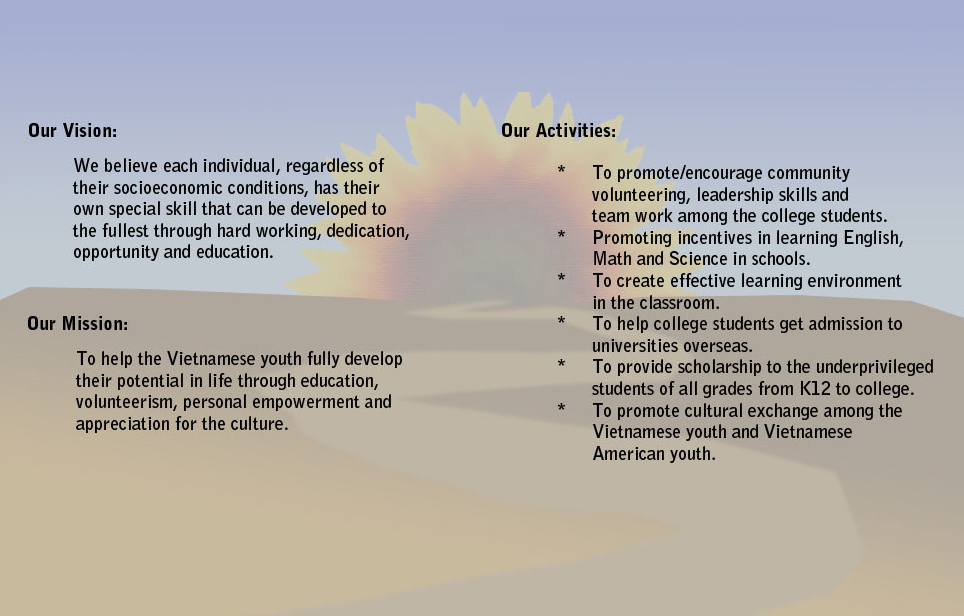The objective of this project is to provide drinking water that meets or exceeds World Health Organization (WHO's) standards at affordable costs to the low income communities in Vietnam and other developing countries. According to a study of JMP 2013, there are more than 2 billion people who use underground water as their primary drinking source and about 700 million in the world do not even have access to “improved” drinking water, let alone “safe” water for drinking. One has found in many cases, both the underground water and the “improved” drinking water are contaminated with arsenic. Our filtered water will be almost free of arsenic, a deadly chemical that can have deleterious short term and long term effects on the human health, especially on the growth of young children; once detected it will be too late and it could jeopardize the work force in Viet Nam now and in the future. Another objective of this project is to provide communities with education programs on the basic health and on the impact arsenic poisoning. The main beneficiaries of our projects are young children of 2-13 years of age and the elderly. As can be seen in the two figures shown below, arsenic has the largest mass poisoning in the history of mankind.
Over the years, we have been successful in providing WHO quality water to low income communities in Viet Nam. mainly due to the following attributes: unique community partnership, our expertise in reverse osmosis (RO)- the most advanced water filtration technique known to the technical community- and team representatives in Viet Nam. Our representatives in Viet Nam are knowledgeable in the RO technique and have first-hand experience in the effects of water quality on the human lives in the developing countries. We have worked closely with water station owners on an as needed basis on different facets of the project, ranging from site selection, infrastructure to water testing and station maintenance. In parallel with providing high quality water, we also assist station owners in holding classes/seminars to bring basic health education and arsenic contamination awareness to the communities.
In addition, ESI has also provided off-grid- water filtration systems for remote areas and water desalination systems for islands and fishing boats. Particularly, the on-demand self-powered water purification systems -also known as the mobile water filtration systems are very useful for emergency response in such a country like Vietnam where deadly floods strike every year, resulting in many damaged houses, destroyed crops and contaminated water. The latter contains intestinal bacteria viruses, agents of typhoid, tetanus and can cause serious outbreaks of infectious diseases and sicknesses.
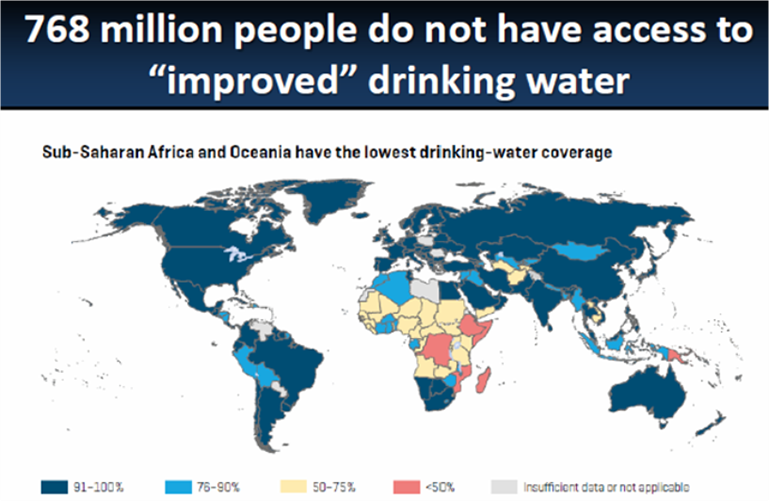

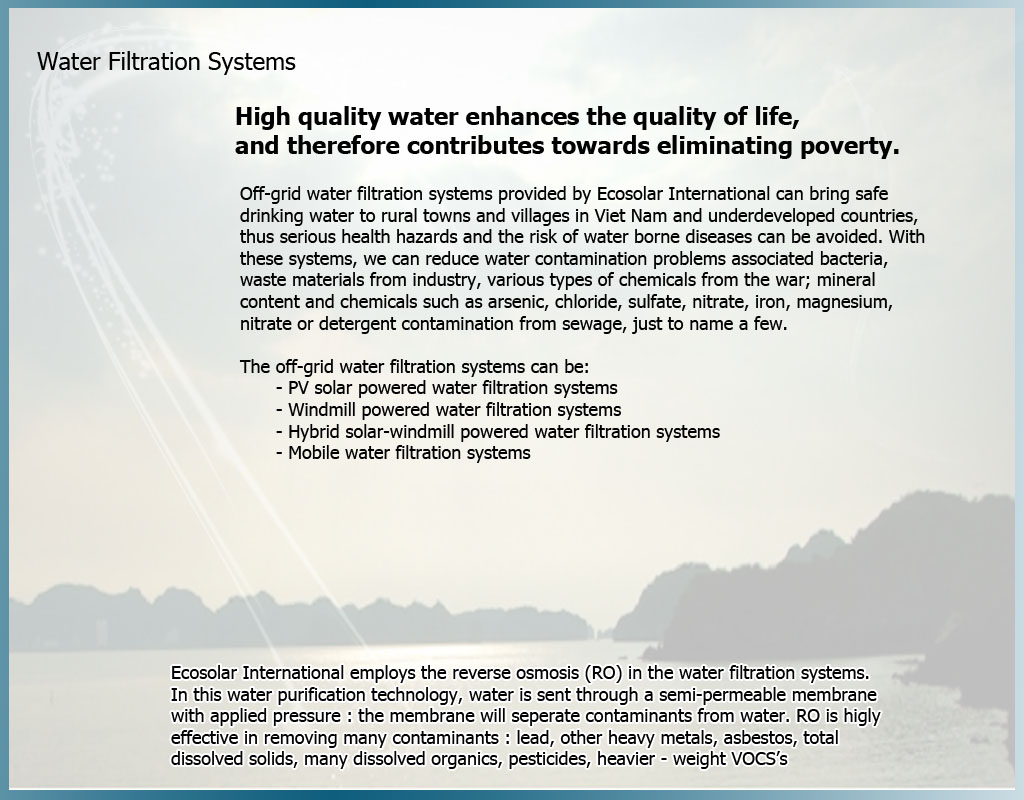
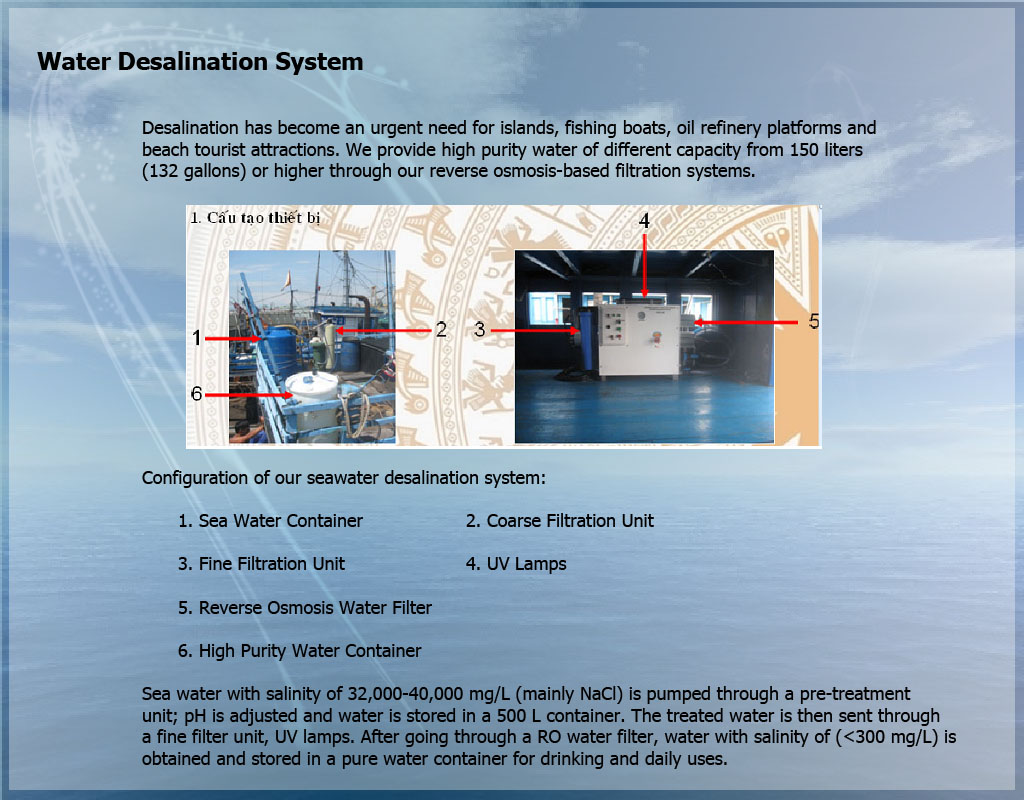
27% of the well water in the Red River Delta has arsenic level exceeding the safety guideline.
It is "a misleading perception” to assume that well water is a solution to contaminated water problems, since it will give “a sense of false security” to the people in the communities. As can be seen in the figure below, tens of thousands of wells have been built in the last twenty years in the Mekong River Delta. That is due mainly to the efforts of many humanitarian organizations trying to reduce illnesses from waterborne pathogens. But as the time went by, another serious problem has occurred : consumers of the well water and crops irrigated with the well water began to show symptoms associated with arsenic exposure from deep aquifers underground. This has been clearly proved true as in the case of Bangladesh ; where studies have shown that up to 77 million people have been exposed to this deadly semi-metal and more than twenty per cent of deaths of a study population of 12,000 Bangladeshis can be attributed to arsenic poisoning. (Christine Lepesto, Treehugger, June 2010). A similar situation has occured in many provinces in Cambodia; where large quantities of arsenic have been found in the wells which were drilled up to 100 meters deep (Cheang Sokha, The Phnom Penh Post, September 2006).

There are substantial differences in clean water access between urban and rural areas and small towns. Seventy percent of the Vietnamese population lives in rural areas. In 2010, only 23% of Vietnamese had a tap in their home and even then, there is widespread contamination of municipal tap water.
In Viet Nam, rain and surface water from rivers, lakes, ponds and reservoirs are generally contaminated with bacteria, waste materials from industry, various types of chemicals from the war ; whereas the ground water has high mineral content and is full with arsenic, chloride, sulfate, nitrate, iron, magnesium , nitrate or detergent contamination from sewage. One of the greatest concerns is the presence of arsenic in water. It has been reported that concentrations of arsenic in the Mekong River Delta can be as high as 845 µg/L or 845 ppb (average 39 ppb) and in the Red River as high as 3.05 mg/L or 3,050 ppb (average 159 ppb) [M. Berg et al., 2007] .
The current arsenic contamination in water in many rural areas in VN and the deleterious effect of this chemical on human health are our main concerns and the main reasons we have tried to provide WHO quality drinking water to the poor communities in VN.
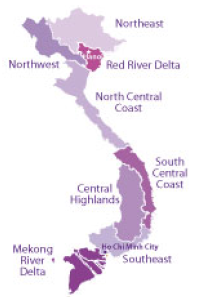
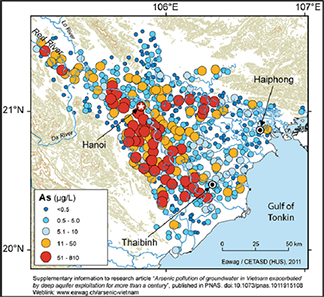
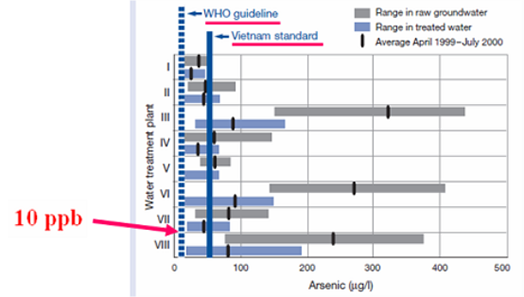

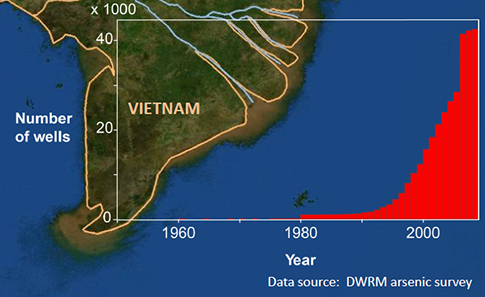
Arsenic contaminated water will lead to many deleterious effects on the health of people, especially on the growth of young children.
Short term effects can occur within hours or days of exposure; whereas long or chronic effects occur over many years. Long-term exposure to arsenic has been linked to cancer of the bladder, lungs, skin, kidneys, nasal passages, liver and prostate [J. Nriagu, 2002]. An arsenic amount of slightly higher than 10 µg/L or 10 ppb may cause neurological damage to those who drink contaminated water, while higher concentrations of 9 to 10 mg/L or (9,000 to 10,000 ppb) of arsenic in drinking water have resulted in severe gastrointestinal disorders, impairment of bone marrow function, and neurological abnormalities [N.E. Korte et al., 1991; WHO's guidelines for drinking water 2008]. Non-cancer effects can include thickening and discoloration of the skin, stomach pain, nausea, vomiting, diarrhea, numbness in hands and fee, partial paralysis, blindness and effects on the cardiovascular and nervous systems. Furthermore, reports from UNICEF shows diarrhea caused by dirty and unsafe water is the main cause of many deaths of children under 5. The death toll is approximately 1.4 million per year worldwide. In summary, poor quality water will also lead to long term effects on the health of people, especially on the growth of young children. Furthermore, with a lack of clean water systems, insufficient education programs on the impact of arsenic poisoning among communities, arsenic contamination will remain a persistent threat to human health in Viet Nam for the next decades.
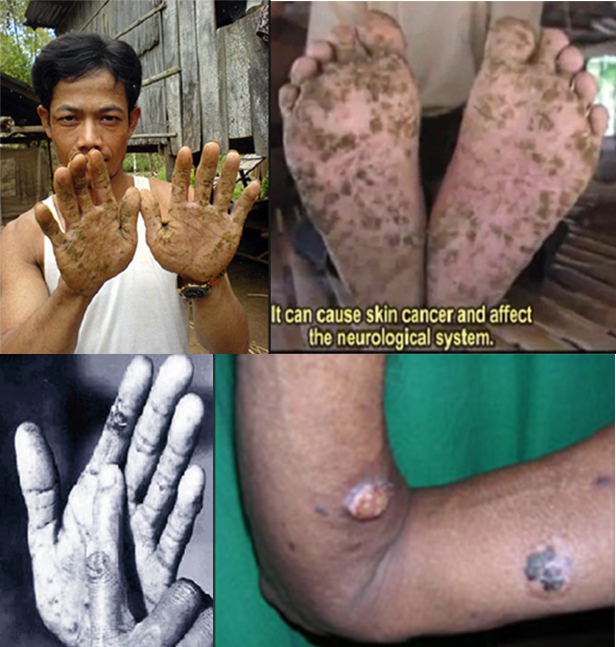
We would like to leave this subsection with a sad but inspiring story about a Cambodian boy who was featured in a documentary “Born Sweet” by Academy – Award- wining director Cynthia Wade. The boy, by the name Vinh, is so young to cope with such a drastic illness from drinking arsenic contaminated well water in his village. His father, grandfather, other relatives and villagers share the same fates. The documentary has told a life tragedy of not only Vinh but also of the whole village which is on the verge of being wiped out . Vinh is aware that his illness is not curable and is philosophical about life and death . Instead of being pessimistic as most of the kids in his situation will usually do, he has chosen a “positive “ way to enjoy “the present moment” of his life: he made a karaoke video , dreams to be a star some day and often give speeches to the public about the detrimental effects of arsenic poisoning in drinking well water.
In the past decades, several domestic and international organizations had donated hundreds of water stations to communities across Viet Nam. The problems facing them were quality of the water filtered through some of these stations was getting poorer over time to the point that the systems stopped functioning due to inadequate maintenance; and nobody was willing to make an attempt to bring the malfunctioning systems back to life, mainly because of the cost and the liability involved. In some cases, thefts and vandalism took place. In order to prevent these problems from occurring, we have come up with an approach that we call the "community-partnering approach". Our approach is unique, effective and economical feasible in solving the problems with thefts, vandalism and in providing WHO quality drinking water at a lower cost. In this approach, ESI will provide clean water stations whereas the station owners will provide infrastructure at their own expenses and be responsible for managing, maintenance and legal liabilities for water stations. Members of Ecosolar International in Viet Nam will work closely with the community members in site selection, station maintenance and on the basic hygiene and sanitation education. ESI in Vietnam will identify the communities such as schools and hospitals that need clean water, but can not afford it due to their budget limitation. Since people in the community of choice have to make a commitment in finance, volunteer their time and labor from the very early stage of the project, they will feel "a sense of ownership" in keeping the water station function effectively over a long period of time for the betterment of their community.
We will use the well known and most efficient reverse osmosis (RO) in filtering water. In this RO technique, pressure by means of a pump station is exerted on the side with the concentrated solution to force the water molecules across the membrane to the fresh water side. Water from tube well will go through a number of steps: (i) a sediment filter to trap particles, (ii) a chemical filter to trap organic chemicals, (iii) a reverse osmosis RO filter which is a thin film composite membrane and (iv) optionally an ultra-violet lamp for disinfecting any microbes that may escape filtering by the RO membrane. Water discharged after step 2 will be used for daily uses, whereas water going through steps (3) and (4) will meet or exceed WHO's standards (similar to the water quality at Trung Vuong Kindergarten that we built in 2012, as shown in attachments 1 &2 in the "Articles" section) and will be used for drinking and cooking. By doing this way, not much water will be wasted during the filtering processes ; besides we can provide clean water for daily uses and WHO quality drinking water at the same cost of building and operating clean water stations. It should be noted that quality of discharged water is much better than water taken directly from the tube well which is known to cause rash and/or other skin related symptoms when the children take baths.
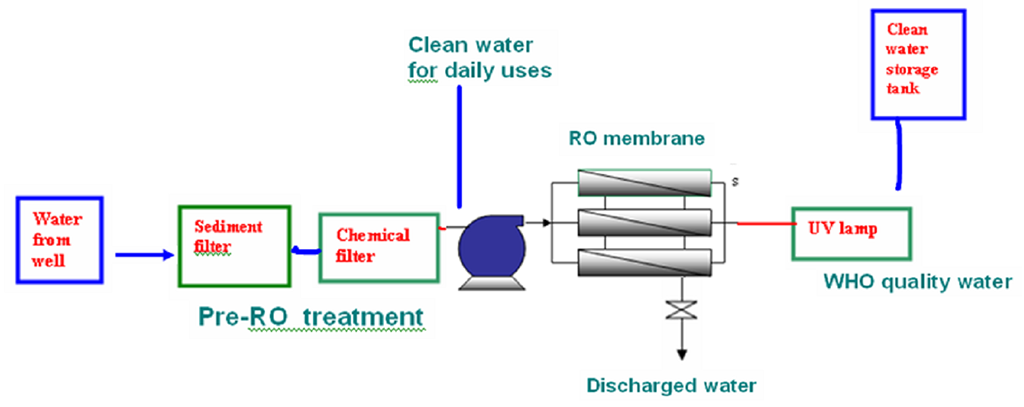
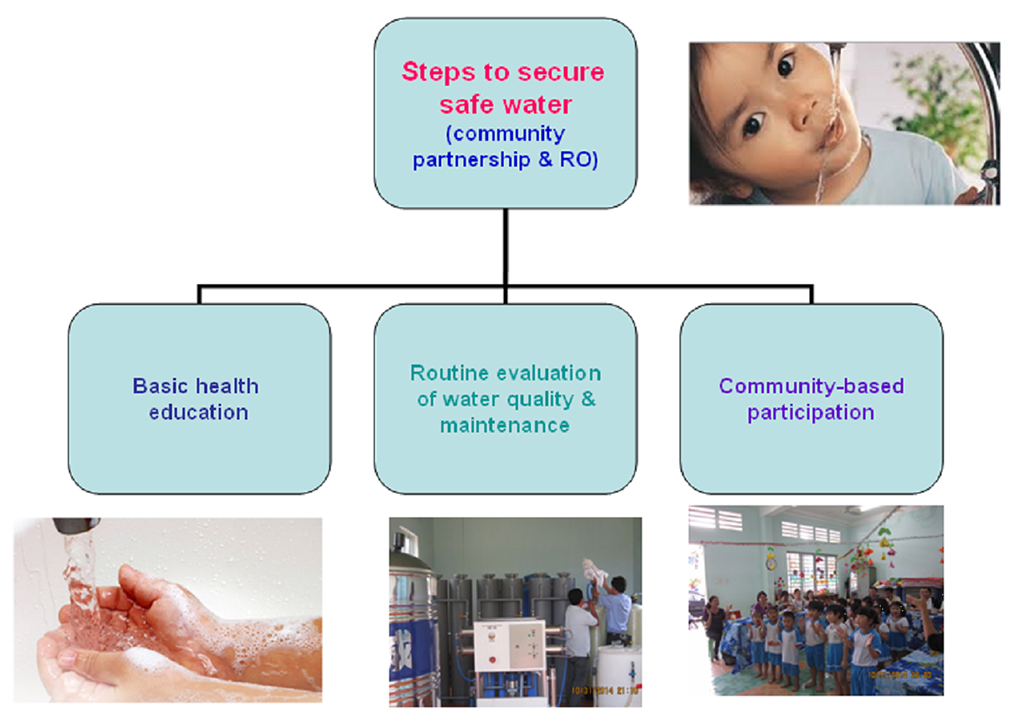

Over a period of 8 years, Ecosolar International have built and donated more than 35 water stations to provide WHO quality drinking water and clean water for daily uses to many communities in Vietnam.
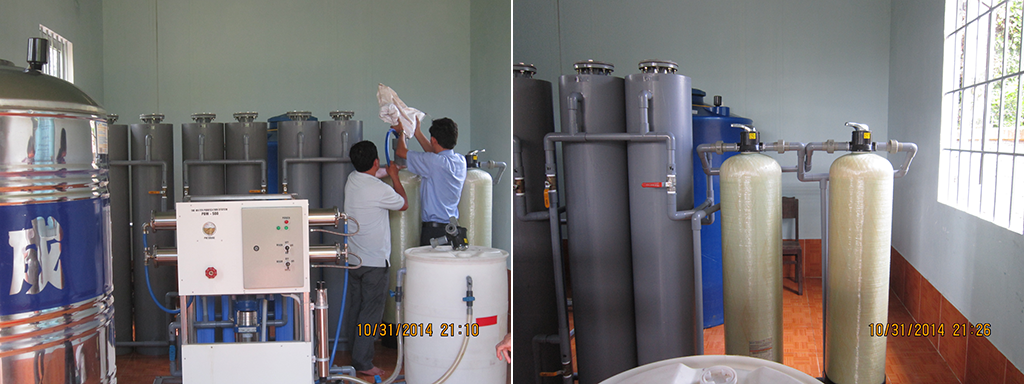

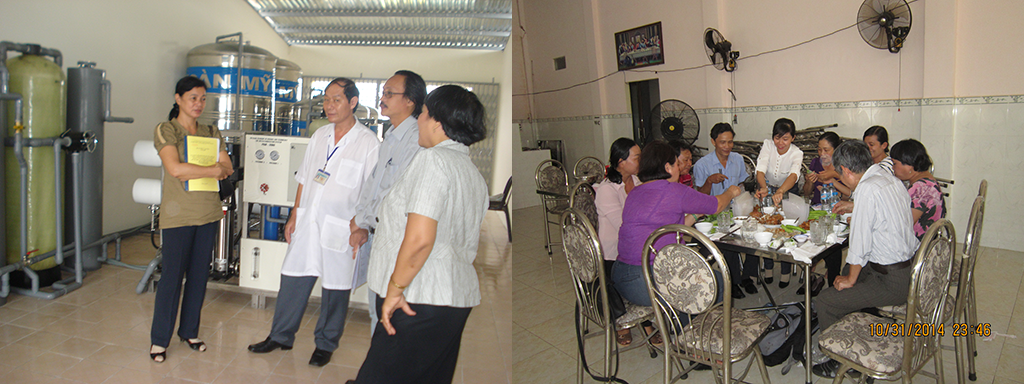

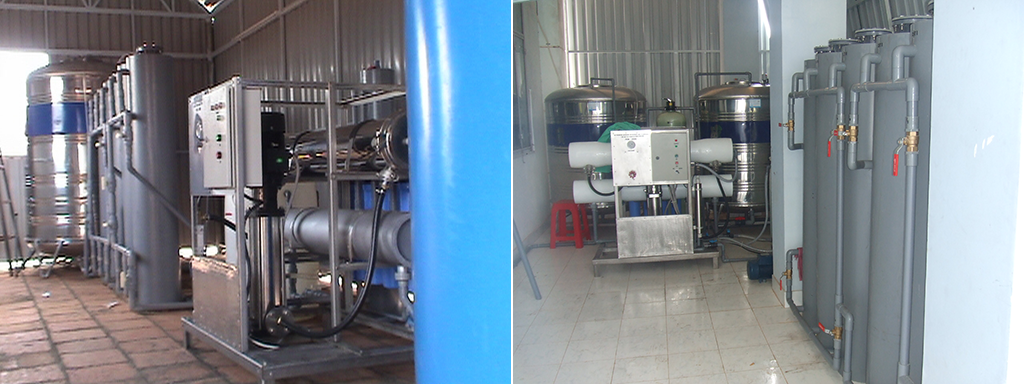
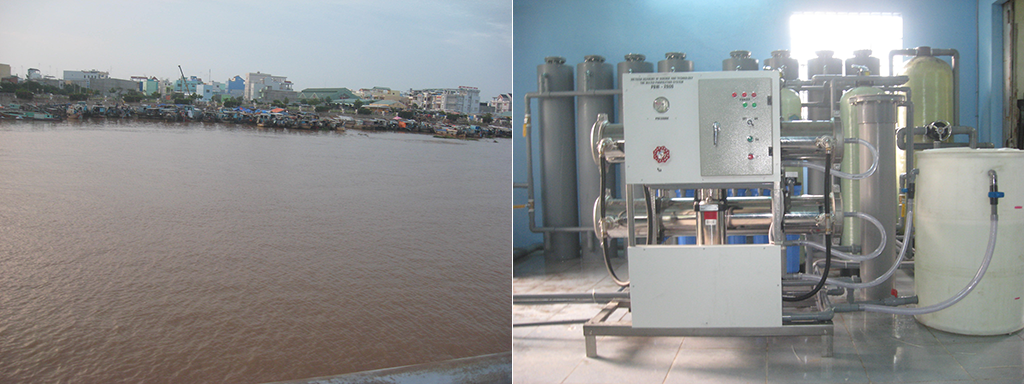
(a) In the rural and remote areas in Vietnam, health care and education have suffered. In the field of education, not only the students do not have the opportunities that their counterparts have enjoyed in the big cities, their schools generally do not have facilities which help them with their studies especially in science. Many schools do not have microscopes. Even in the schools with better facilities, students have a very limited time to get access to microscopes. Inundated with a large number of students for a limited allotted time for each class, even with good guidance and commitment from teachers, each individual student has to take time to learn to adjust and optimize the images and therefore does not have sufficient time to "get used" to the microscopes and to learn the subject matter, let alone the group discussion. As a result, study has become boring and they have ended up "memorizing" the text without much understanding in order to obtain a good grade in the test. This current learning environment could have driven a lot of students away from science, resulting in a potential lacking of a strong work force in science & technology in the future. (b) The hospitals in rural areas generally have a small staff with a small number of health providers and are generally crowded with patients. In many cases, patient rooms and even the hallways were packed with a large number of patients. Compounding with a couple of microscopes available, the doctors and nurses do not have enough time to talk to patients, diagnose their illnesses accurately and communicate effectively with colleagues. In addition, the health providers have to spend a lot of time which they don't have, taking data, writing reports and presenting results to their patients and colleagues. Their reports are generally loaded with words and generally do not have accurate data and reliable images to support their findings and conclusions. Their explanations are therefore vague, inconsistent and hard to follow. To make the matters worse, when the doctors are running into a difficult problem that deems necessary to get opinions from their colleagues in larger hospitals in the cities; it's hard to conduct a fruitful discussion. due to the lack of reliable data and better means of transmitting information. As a result, healthcare services have suffered, which could inadvertently lead to malpractices, failure in disease prevention and in some cases to deaths
Our solution is to provide schools and hospitals with our in-house developed low cost NHV-CAM microscopes which could potentially help low income communities with educating their children and with improving healthcare services over a period of many years. This is a win-win-approach which would benefit all the parties involved: students will enjoy learning more; their curiosity in science and technology is stimulated; teachers will be motivated to search for new things to share with their students; doctors and nurses will do their jobs more efficiently in helping patients, enjoy the discussion with colleagues on medical related topics, making new friends and networking. Besides the fact that our NHV-CAM microscopes are small and light and can be easily dismantled and reassembled, and therefore can be shared by many people at different classes and/or laboratories, the microscopes are unique with the following attributes:
NHV-CAM microscopes are useful in providing classrooms in zoology, botany and biology with fun learning environments where students and teachers can study, observe the objects as a group on a large TV monitor or a projector, and accurately measure dimensions of the objects. The discussions therefore become more interesting and the studies are getting more challenging; they can also observe live the reaction of a living object with applied external forces such as chemical components or mechanical means. To a larger extent, students are motivated to think more "out of the box" and to learn more about the subjects with much more interests.
Soft skills play an important role in real life. Since a group leader is required for each study session to coordinate the agenda and each student takes turn making presentation which is generally followed by questions and comments, students will develop public speaking, leadership and interpersonal communication skills over time. Furthermore, students would enjoy more in writing reports with colored images and object dimensions from microscopes, resulting in improving their writing aptitude. In addition, with the filming feature in the camera, teachers can film the experiment session which they can show to students in other classes or to their colleagues later without the necessity of repeating the same experiment.
Doctors and nurses can save time with patient medical records, report writing and diagnoses. An electronic library for the patient medical history known as API MediScope is created for health providers to use which provides convenience and saves time.
According to a study by the World Bank in June, 2017, out of a population of 95 millions people, 31 millions are females living in the rural areas in Vietnam. The birth rate was 15.5 births/1,000 population and the perinatal death rate was 5.9 deaths/1,000 population; which shows an extremely high new born mortality rate of 38% [1]. We believe this high mortality rate was largely due to the inadequate antenatal care services. These services, which are indispensable to the women health, include bio-medical assessments (body weight and height, blood pressure, blood type, fundal height, fetal abdominal circumference, fetal heart rate, vaginal examination, ultrasound scan and urine and blood testing), care provisions (tetanus vaccination, iron/folate supplement) and health consultation and education [2]. It has also been known that there are disparities in antenatal care between urban and rural areas in Vietnam, which could cause high rate of maternal and neonatal mortality, especially for the high risk pregnancy. Toan K Tran et al. had conducted a study on 2132 pregnant women on one rural and one urban areas in Hanoi Province. Their results have shown that women in the rural area had fewer visits and received fewer ANC services than the urban women. [3] . The average number of visits was much lower in the rural setting (4.4) than in the urban (7.7). In the rural area, 77.2% of women had at least three visits (as compared with 97.2% in urban area) and 69.1% (as compared to 97.2% in urban area) attended ANC during the first trimester. Only 20.3% of the rural women compared to 81.1% of the urban women received all core ANC services. As a result, the adequate use of ANC was 5.2 times in the urban than in the rural setting (78.3% compared to 15.2%). Most rural women used antenatal care at commune health centers and private clinics while urban women mainly visited public hospitals. Expenditure related to ANC utilization for the urban women was 7.1 times that for the rural women.
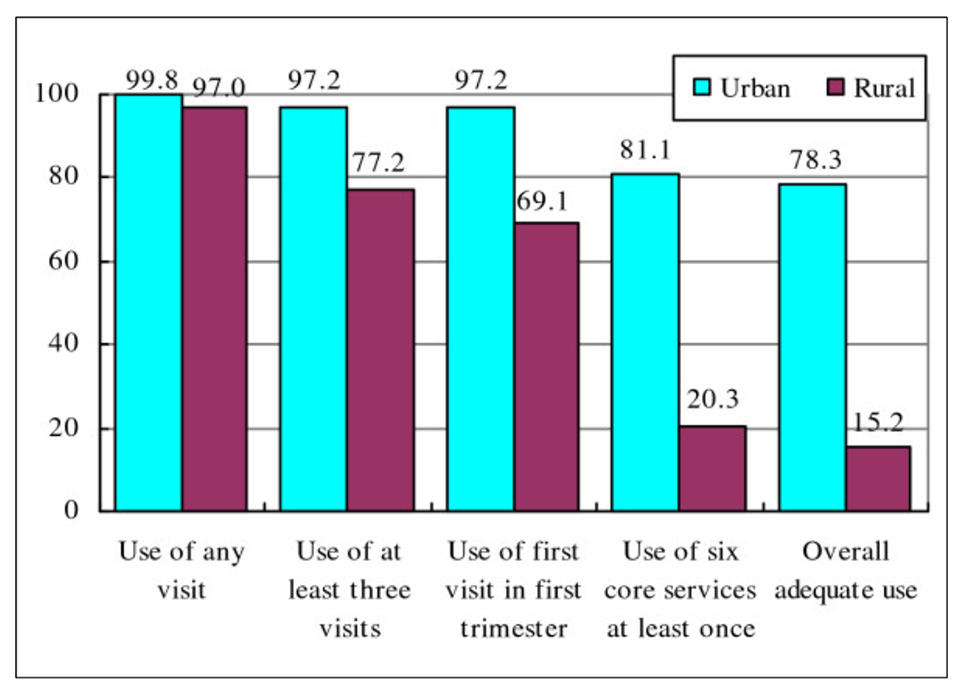
In an another study which was conducted by the United Nations Children Funds (UNICEF) [4] on a much larger sample population of 11,614 households in 6 regions in Vietnam extending 63 provinces from Red River Delta, North Central Areas all the way to Mekong River Delta. Results indicate substantial disparities exist along the dimensions of ethnicity and living standards: ethnic minority children were three times as likely as Kinh/Hoa children to die before their first and fifth birthdays; and children in the poorest households were twice as likely to die before reaching 1 and 5 years of age compared to children living in better -off families.
Telemedicine is the transmission of patient images from one location to another for the purposes of sharing data with other radiologists and physicians. Telemedicine improves the healthcare access for rural patients in providing, to a certain extent, a 24/7 access to the specialist. Delay in diagnosis and treatment will be less; this in turn could work for the betterment of the patients health. Doctors and nurses in the hospitals in the rural areas can share medical information of the patients including X-rays, CT’s, MRI’s, ultrasounds on line with doctors in larger hospitals in the cities with more facilities and specialists to seek their opinions in diagnosis or treatment. The process of telemedicine is comprised of three main components: an image sending station (acquisition of images), a transmission network (transfer the images) , and a receiving image station (viewing of images). High quality display screens are required for this type of work to provide high quality clinical images. Information transmission can be realized, using standard network technologies such as internet, telephone line, local area network and the high tech known as computer clouds. Telemedicine services include, reading of the patient records, report writing, and on- call services. The services are particularly important for the emergency rooms, where most of the physicians are not trained to read X-rays images, CT scans or MRI. In some cases, even there is a radiologist, but this person might have not been adequately trained and therefore requires input from a specialist radiologist such as MRI radiologists and pediatric radiologist; and these subspecialists are generally few in number even in the hospitals in the metropolitan areas. Telemedicine can be an effective means for the collaboration between physician in the rural areas and the one in the cities. For example, an emergency doctor at a rural urgent care center can obtain from a specialist radiologist in a large city and discuss the case on the telephone while simultaneously viewing his/her patients’ radiological images.
Our first step is set up a telemedicine system linking a main hospital in the urban area with a rural hospital (satellite hospital) as a combination set; each set is set up for each province in a total number of five provinces for this project. We plan to study the effectiveness of telemedicine in improving antenatal care of pregnant women in rural areas in three fronts: (i) health risk (ii) affordability; and (iii) accurate medical diagnoses. Success of this project will potentially open the doors for many similar projects to flourish which could narrow down the disparities in antenatal care of pregnant women between urban and rural areas in Vietnam, resulting in reducing complications from pregnancy and childbirth, decreasing stillbirths and prenatal deaths and increasing care delivery throughout pregnancy. From the experiences we have gained from our “community partnership approach”, we believe that once the healthcare providers and people in their communities are satisfied with the results, the communities will be willing to “chip in” their efforts and volunteer their time for installing more telemedicine systems in other hospitals at their own expenses. In an attempt to contain the cost at a fraction of the currently existing systems, we have worked with universities and one start-up; where most of the technical members are essentially volunteering their time or charge a very “nominal” fee because they all believe in the cause.
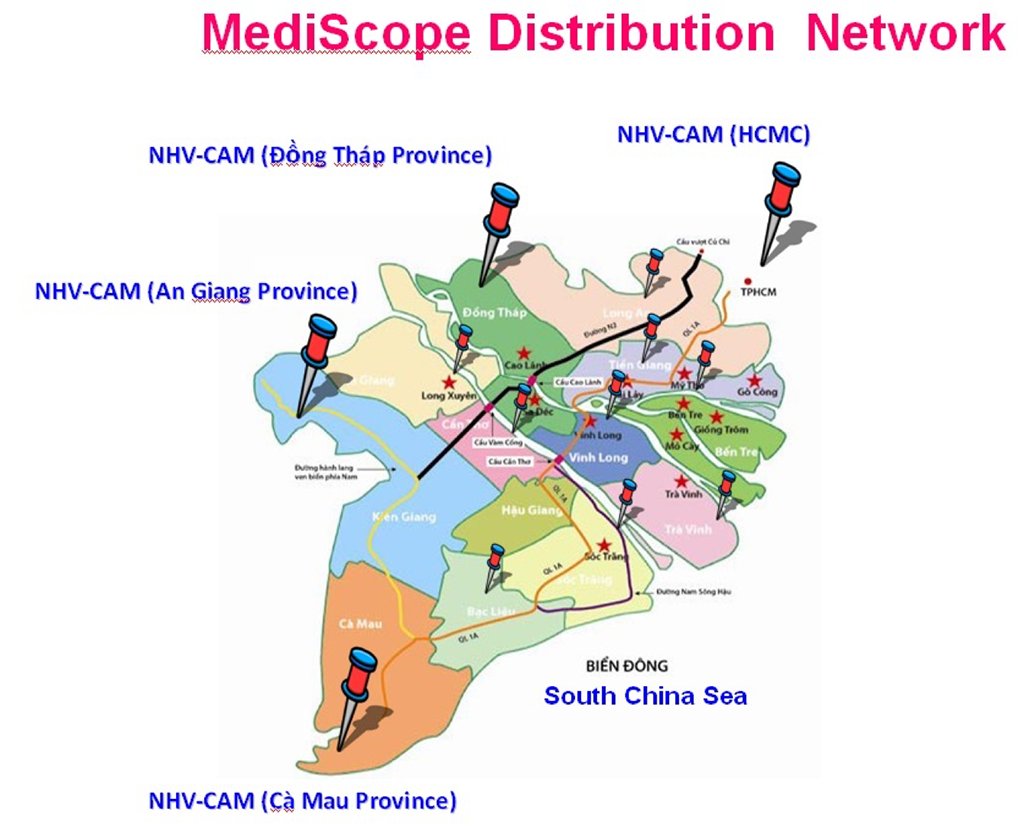
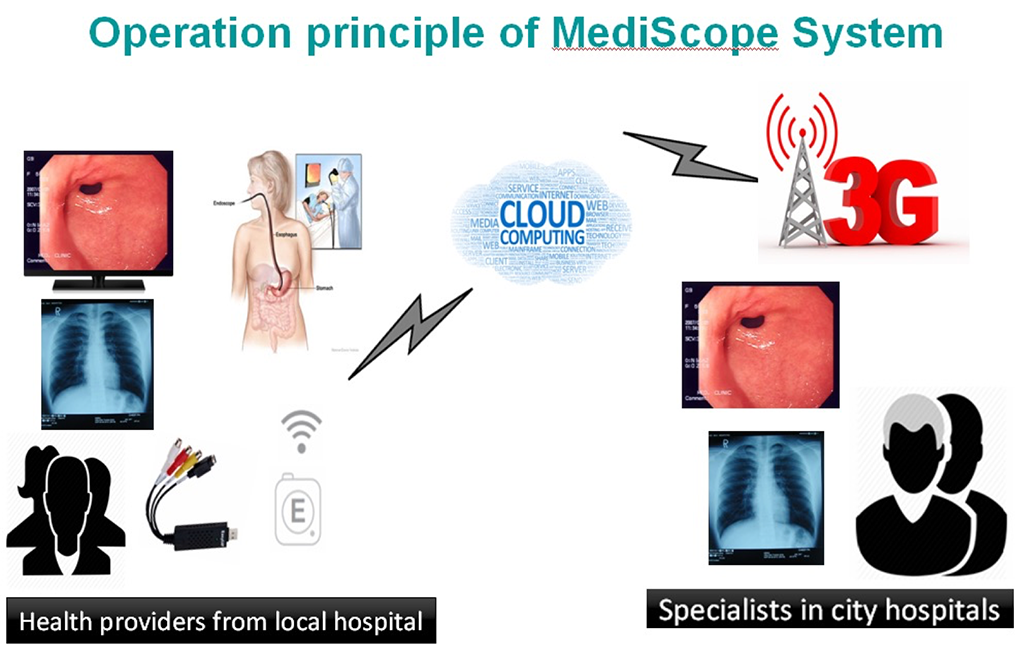
In the period of 2016-2017, we have set up four “open laboratories” to train healthcare providers and technicians on how to capture, store and send images on line. These centers are equipped with our home-built NHV-CAM microscopes, computers, large area screens, software and other telemedicine related equipment. “Open laboratories” are the places where our staff trained healthcare providers on how to capture, store and transmit images on-line. We showed doctors and nurses how to save time with patient medical records, report writing and diagnoses. An electronic library for the patient medical history known as API MediScope was created for healthcare providers to use which provides convenience and saves time.

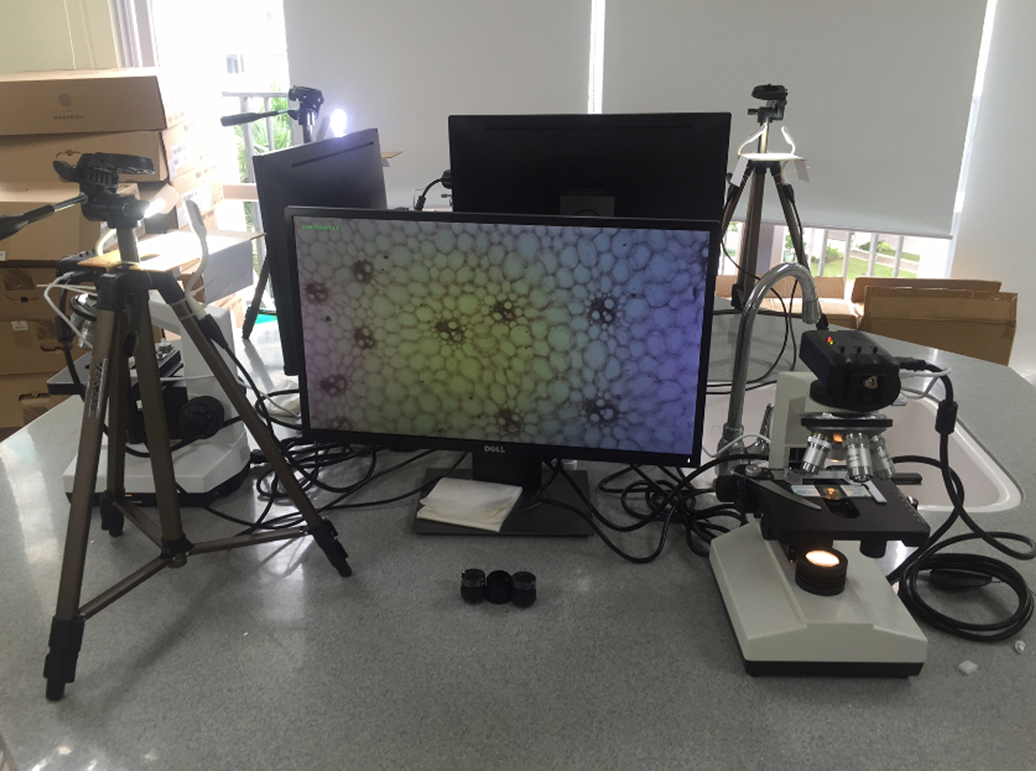
Most recently, we have linked one of our open laboratories with Department of Gynecology of Medical Center of Hue and Medical Center of Phu Vang District, Hue Province to study the immune cells in women. Pregnancy resulted in a change in number and function of immune cells in utero that potentially affects fetal survival and uterine defense mechanisms. These immune cells declined substantially after the placenta was formed. It has also known that this cell population helped to optimize nourishment of the fetus during this early pregnancy. More than 200 pregnant women had participated in this study. Cell images in the uterus of women were taken, recorded and transmitted on line through our telemedicine systems. X-rays images of the chess and bones of a patient were also taken.


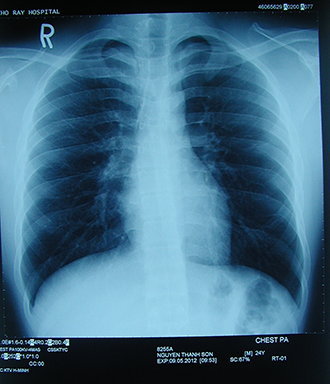
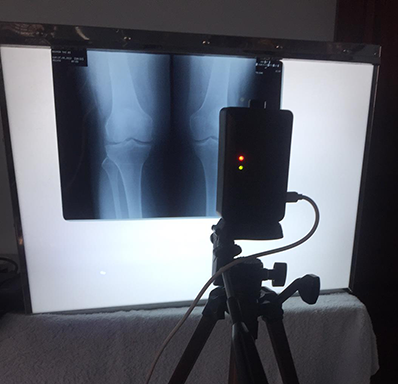
[1] [1] https://en.wikipedia.org/wiki/Demographics_of_Vietnam [2] Ministry of Health (MoH) Volume 3367/QD-BYT. Medical Publishing House, Hanoi; 2003. National Guideline on reproductive health services; pp. 45–56. [3] Toan K. Tran, Chuc T K Nguyen, Hinh D Nguyen, Bo Eriksson, Goran Bondjers, Karin Gottvall, Henry Asche4r and Max Petzold: BMC Health Services Research, May 23, 2011. PMCID: PMC3224373. [4] General Statistics Office, Ministry of Heath 2011, United Nations Children Funds (UNICEF), United Nations Population Funds (UNFPA).
Our microscopes are built at a small fraction of the cost (about 10 times less expensive ) of what we would pay for a microscope of similar performance on the market. As a result, our microscopes have found inroads into a large number of schools and hospitals in many regions throughout Vietnam from small towns in the Northern Tip to villages in the Southern Tip, from provinces in Western Highlands to Central Highlands and even to the remote mountainous areas. A selection process is set up for prospective beneficiaries, based on geographical location, financial situation, willingness and volunteerism of the community members.
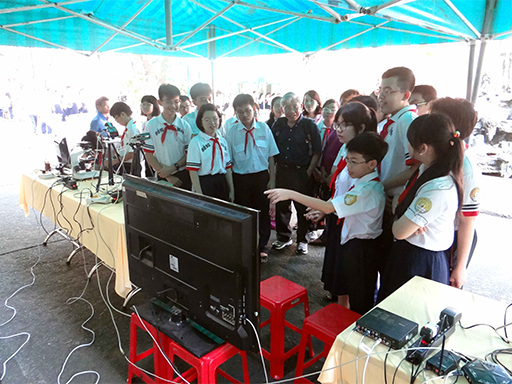

Our set of NHV-CAM microscope which has been developed by Mr. Viet Huong Nguyen, a board member of ESI and his team at DESLAB, Faculty of Electronics and Telecommunications, University of Science in Ho Chi Minh City, Vietnam and VLSI Laboratory, University of Electro-Communications in Tokyo, Japan. Our microscopes are built at a small fraction of the cost (about 10 times less expensive ) of what we would pay for a microscope of similar performance on the market The newly developed high speed microscope is equipped with IC based hearing , viewing, photographing and filming features and consumes low power. This set of microscope can be practically compatible with the majority of microscopes on the market. Images can be displayed on a large screen of for example TV (HDMI Video) , PC monitor (VGA, HDMI) Laptop/PC/smart phone (Wifi RJ45) or mobile Android/iOS smartphones.
Our NHV-CAM microscope has three main functions: (1) photographing: images from the microscope can be photographed and stored in USB ; (2) filming: objects are filmed and the images are stored in USB; and (3) Internet: images from microscope can be sent directly online to Windows, Android. Main components of NHV-CAM microscope include : NHV-CAM 2.0 + 5V 3A source+ video cable + HDMI cable, camera tripod + 2 USB lamps + 5 V 500 mA sources (2) + 2 USB cables, lens connecting NHV-CAM + 3 adapter lens, adapter objective lens-NHV + 2 adapter connecting lens to the eyepiece NHV , outlet adaptor + object container , a bag to hold the accessories and a microscope SXZ 107T. The microscope is equipped with the Viewer software which helps with measurement, controlling and adjusting such parameters as ISO, brightness, contrast and color management.
With the funding from individuals, companies and other organizations such as Intel Viet Nam, Chau Electronics, HPT Viet Nam and mainly Lawrence S.Ting Memorial Funds, our team has crisscrossed different regions in Viet Nam to install microscopes and to train the people involved on how to use our microscopes. In order to better serve the communities, we hold conferences where microscope beneficiaries meet, share learning experiences, and upload new features of the microscopes.
As of January 2017, we have donated a total of 1000 sets of microscopes combined with computers.
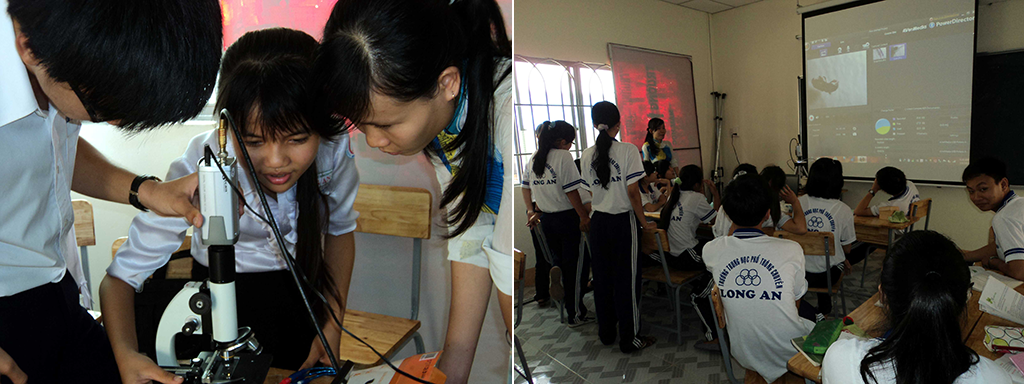
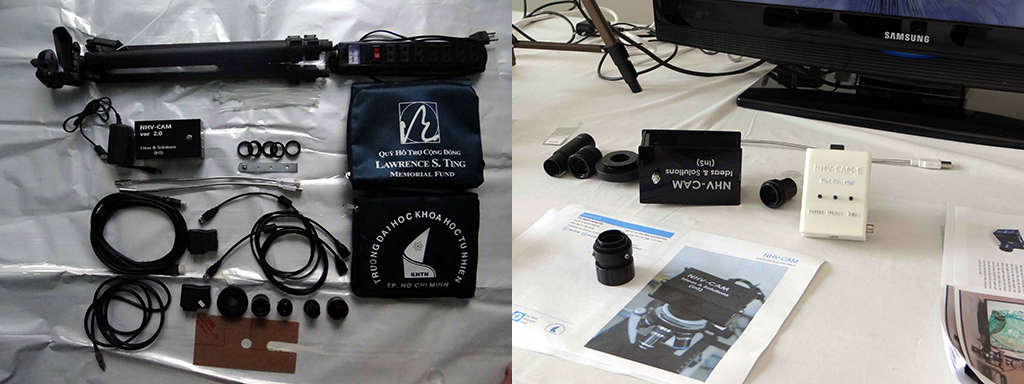
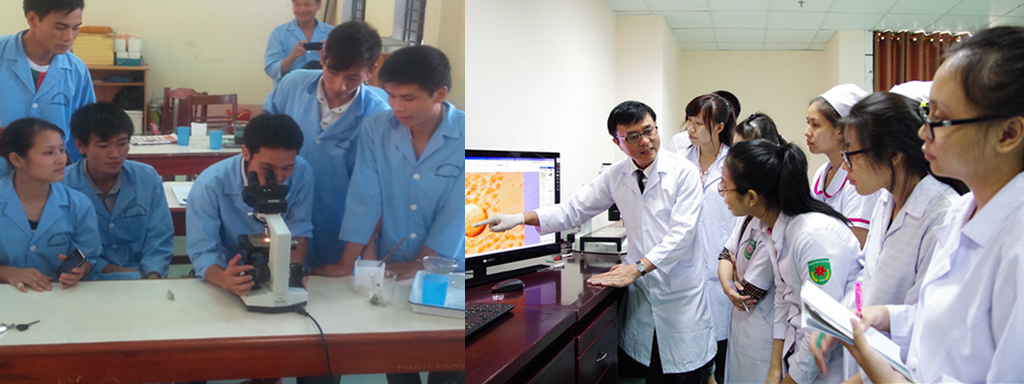

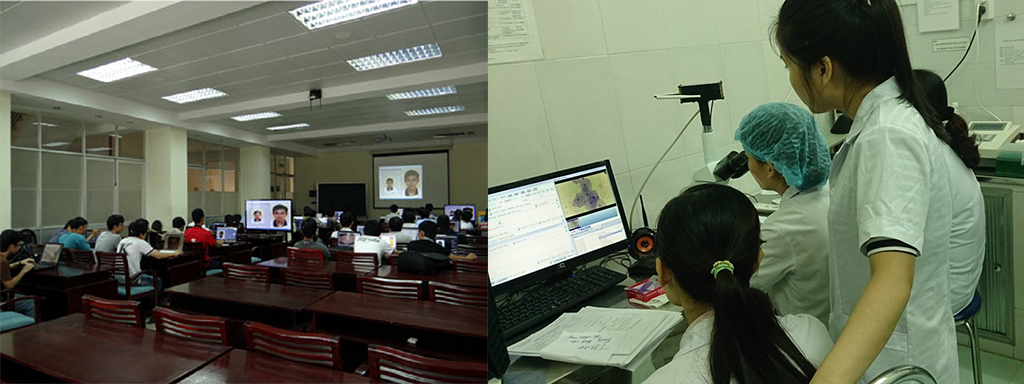

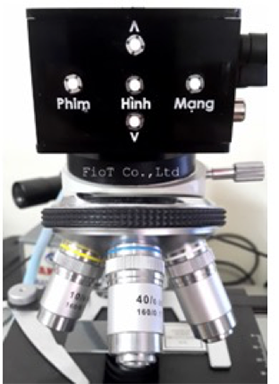
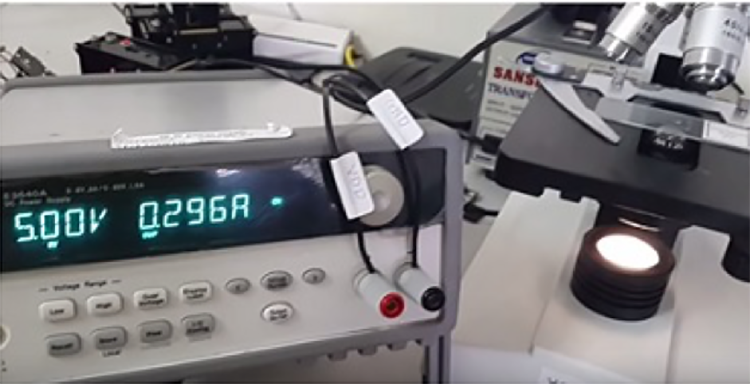
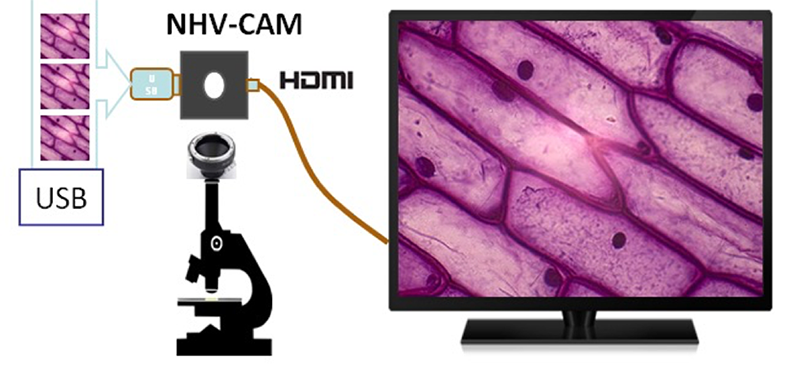

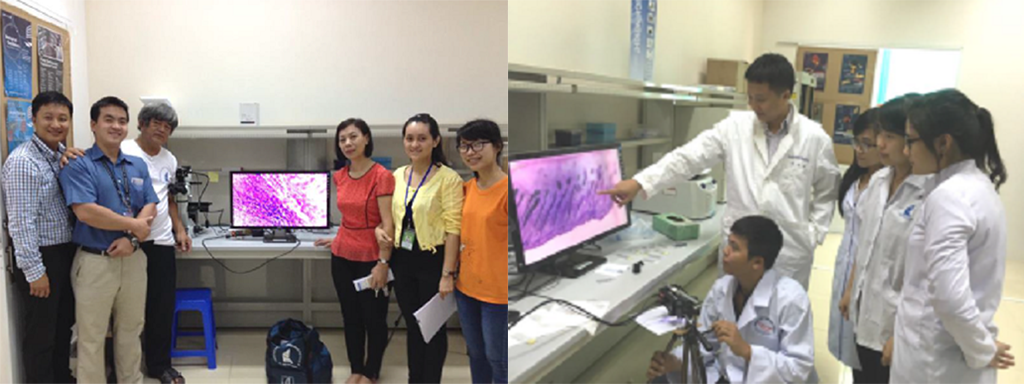
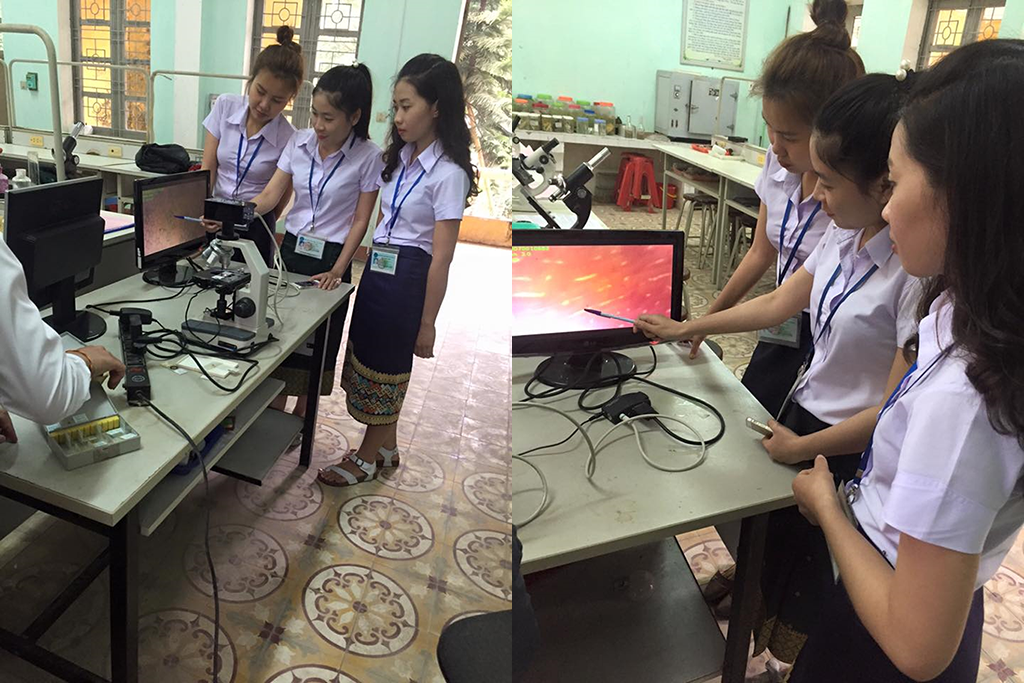
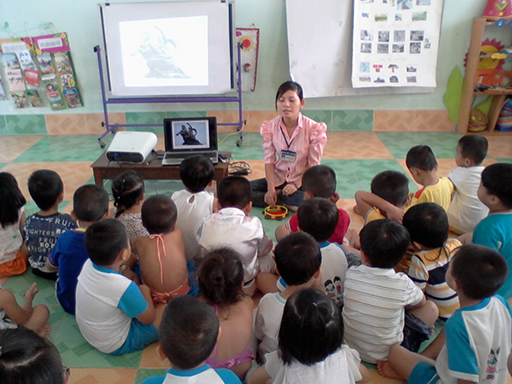
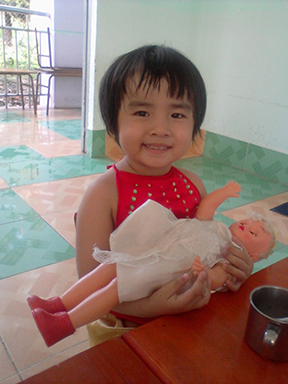
One of Ecosolar International's missions is to help Vietnamese youth reach their full potential in life through education, volunteering, personal empowerment and cultural appreciation. Some activities that Ecosolar promotes are volunteering/leadership /team work/ soft skills workshops for college students. We understand the importance of studying abroad and help college students with the admission process to universities overseas. In addition, we plan to set up a"help-a-child" program where we will provide scholarships to underprivileged students in grades K through 12 in the form of school fees, tutoring, uniforms, and school supplies and to tutor them in maths, science and English to prepare them for a better future. Prospective children will be selected from the schools that ESI has built a strong working relationship in the microscopes and clean water projects. We believe an adequate education is the best way to lift them out of poverty and harsh living conditions that they are in now. Sponsors of the program will receive frequent letters from the sponsored child, in addition to copies of their report cards and school marks. This is a one-year commitment with the renewal option for one or more years should the child proves that s/he has worked hard and made progress in her/his studies.
